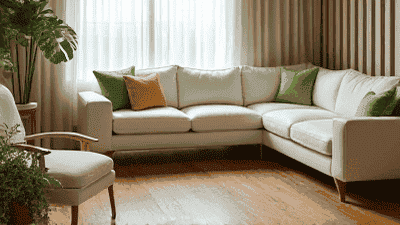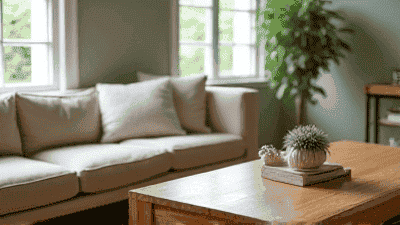Eco-Friendly Furniture Maintenance: Natural Products and Techniques



In a world increasingly focused on sustainability, eco-friendly practices have become essential for home care. Furniture maintenance is no exception. Many traditional cleaning products contain harsh chemicals that can be harmful to both the environment and human health. Fortunately, there are numerous natural alternatives that can effectively clean and maintain your furniture while supporting a greener planet. This comprehensive guide will explore eco-friendly furniture maintenance, highlighting natural products and techniques that keep your furnishings looking great without compromising your environmental values.
Before diving into specific natural products and techniques, it is vital to understand why eco-friendly furniture maintenance is important.
Traditional cleaning products often contain toxins that can linger in the air and on surfaces, potentially affecting your health. By choosing natural alternatives, you can reduce your exposure to harmful chemicals, creating a safer living environment for you and your loved ones.
Many commercial cleaners contribute to air and water pollution. Eco-friendly products made from natural ingredients break down more easily and are less likely to harm the ecosystem. By adopting sustainable maintenance practices, you actively contribute to a healthier planet.
Natural cleaning products often come in minimal or recyclable packaging. Furthermore, many can be made from common household items, reducing the need for excessive purchasing and waste generation.
Using natural ingredients for cleaning can be more economical than buying expensive commercial cleaners. Many effective eco-friendly cleaning solutions can be made from items you already have, saving you money in the long run.

White vinegar is a powerful and versatile natural cleaning agent. It has been used for centuries for its cleaning properties and can effectively break down grime, disinfect, and deodorize.
Uses: Vinegar can be diluted with water to create an all-purpose cleaner for various surfaces, including wood, glass, and metal. It is particularly effective in cutting through grease and eliminating odors.
How to Use: Mix equal parts of vinegar and water in a spray bottle. Spray on the surface and wipe with a microfiber cloth. For stubborn stains, let it sit for a few minutes before wiping.
Baking soda is another common household staple known for its gentle abrasive properties and ability to neutralize odors. It is safe for most furniture surfaces and can be used for a variety of cleaning tasks.
Uses: Baking soda is excellent for scrubbing surfaces without scratching, freshening upholstery, and removing stubborn stains.
How to Use: For a gentle scrub, mix baking soda with water to create a paste. Apply with a soft cloth or sponge, scrub gently, and rinse with a damp cloth.
Olive oil is not only a staple in cooking but also makes an effective natural furniture polish. It helps nourish wood and leaves a nice shine, while its antibacterial properties help prevent the growth of mold.
Uses: Use olive oil for polishing wooden furniture and to condition and protect wood surfaces.
How to Use: Mix one part olive oil with one part vinegar to create a natural wood polish. Apply a small amount to a microfiber cloth and buff the wood in the direction of the grain.
Essential oils not only add pleasant scents but also provide various cleaning and antibacterial properties. Oils such as tea tree, lavender, and lemon are particularly effective.
Uses: Essential oils can be added to homemade cleaning solutions for an uplifting aroma and added antimicrobial benefits.
How to Use: Add several drops of your chosen essential oil to a spray bottle with water or to a vinegar-based cleaner for an aromatic touch.
Castile soap is a plant-based, biodegradable soap made from vegetable oils. It is gentle yet effective and can be used for various cleaning tasks.
Uses: This soap can be used for cleaning furniture, carpets, and even as a dish soap.
How to Use: Mix a few drops of Castile soap with warm water in a spray bottle. Spray on the surface, wipe with a cloth, and rinse with a clean, damp cloth if necessary.
In addition to using natural products, adopting eco-friendly techniques can enhance your furniture maintenance routine.
Dusting should be a regular part of your furniture maintenance routine. Dust buildup can negatively impact indoor air quality and cause wear over time.
For stains on upholstered furniture or carpets, spot cleaning is an effective method that requires less water and product than deep cleaning.
Furniture covers and throws can help minimize wear and tear while providing an additional layer of protection against spills and stains.
Wood furniture benefits from periodic conditioning to keep it moisturized and protected from drying out.
When cleaning upholstered furniture, allow it to air dry instead of using heat. Heat can cause shrinkage, warping, and damage.
Regular inspections of your furniture can help detect and address minor issues before they escalate.

To effectively maintain various furniture types, you might require specific cleaning routines. Here’s a breakdown by furniture type, integrating natural products and techniques discussed above.
Instead of discarding older furniture, consider repurposing or upcycling it. This approach not only reduces waste but can also add character to your home.
When purchasing new furniture, opt for pieces made from sustainably sourced materials, such as reclaimed wood or bamboo.
Buying from local furniture makers supports your community and often results in more eco-friendly materials and methods.
Staying informed about eco-friendly practices and educating your family and friends can create a broader impact.

Eco-friendly furniture maintenance is not only beneficial for the environment, but it also enhances the longevity and beauty of your furnishings. By incorporating natural cleaning products and innovative techniques into your routine, you can create a healthier living space for your family while minimizing your ecological footprint.
From the versatile use of vinegar and baking soda to the gentle touch of olive oil and essential oils, natural products can effectively clean and maintain your furniture. Adopting eco-friendly practices such as regular inspections, proactive cleaning, and a commitment to sustainable materials can transform the way you care for your home.
Embracing these eco-friendly techniques fosters a sense of responsibility toward the environment while ensuring that your furniture remains a cherished part of your home for years to come. Making small adjustments to your cleaning routines can lead to significant environmental benefits, proving that caring for your furniture can go hand-in-hand with caring for our planet.